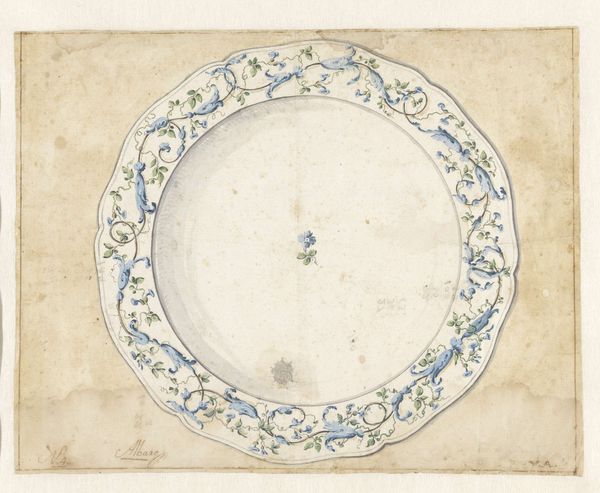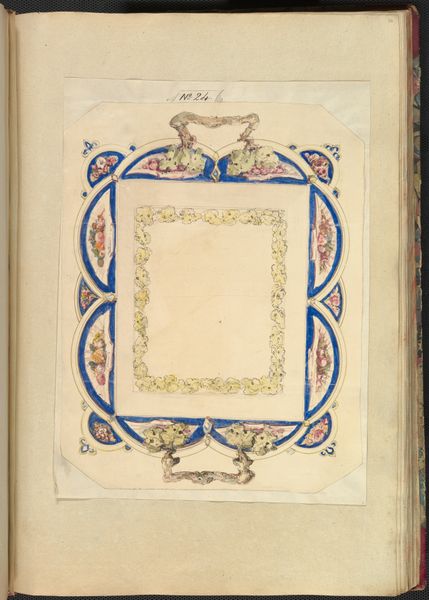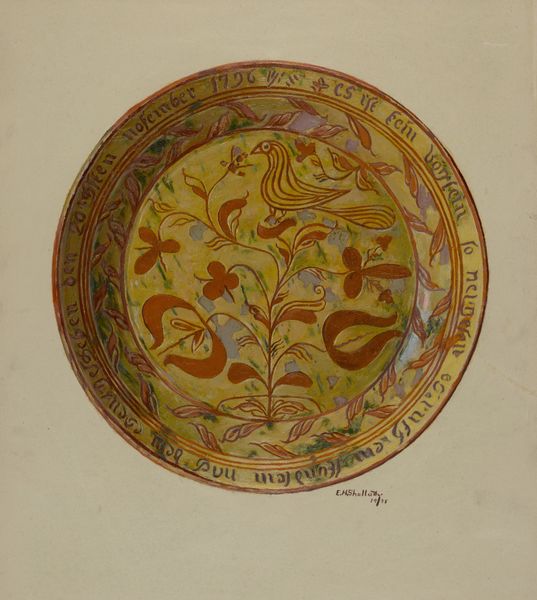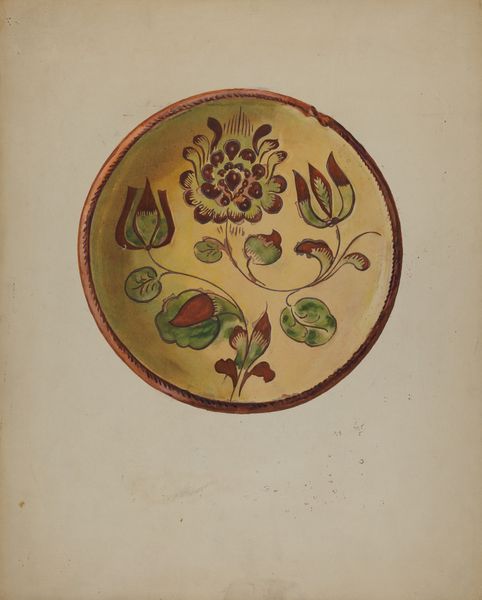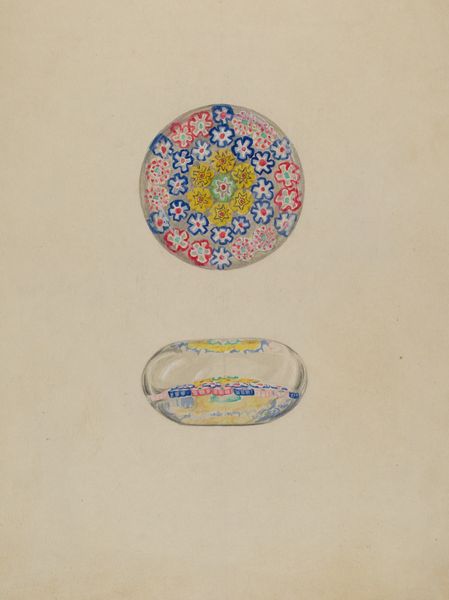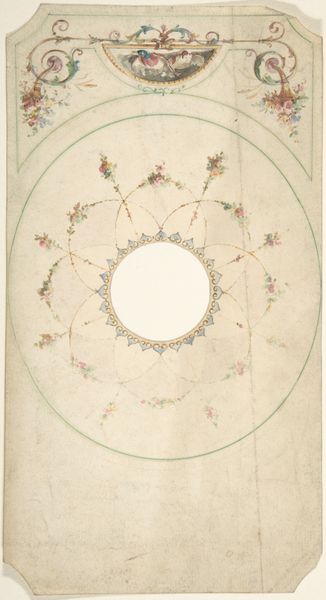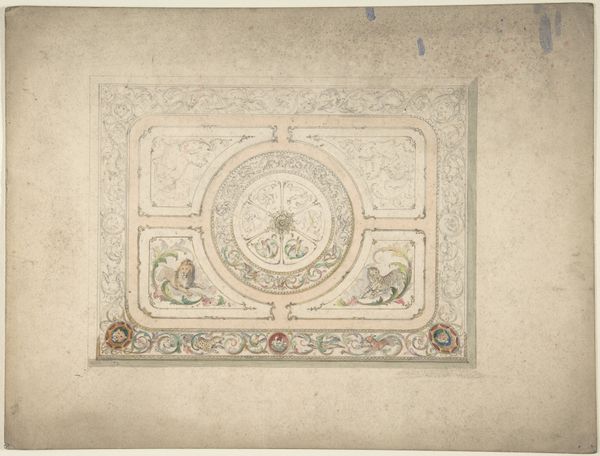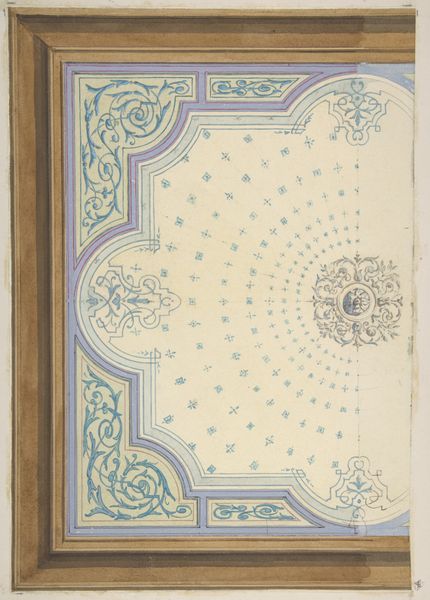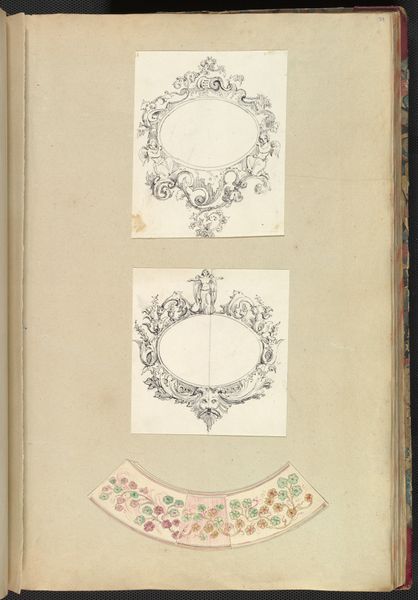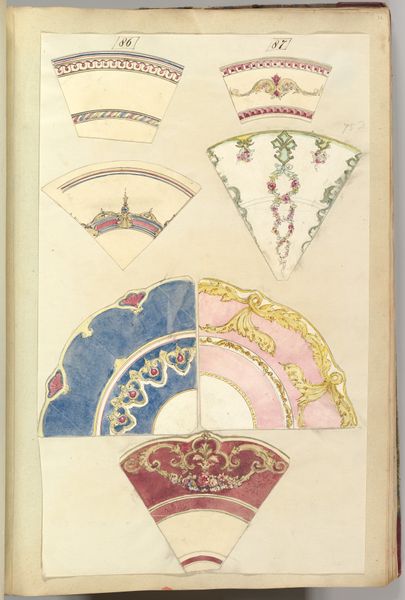
Design for an Eight- Lobed Platter with Leaf Handles 1845 - 1855
0:00
0:00
drawing, print, watercolor
#
drawing
# print
#
watercolor
#
coloured pencil
#
decorative-art
Dimensions: sheet: 16 3/4 x 11 7/16 in. (42.5 x 29 cm)
Copyright: Public Domain
Curator: Well, this is certainly a charming drawing. The piece is called "Design for an Eight-Lobed Platter with Leaf Handles" and it was created by Alfred Henry Forrester sometime between 1845 and 1855. You can find it at the Metropolitan Museum of Art. It's a combination of drawing, print and watercolor. What are your initial thoughts? Editor: It strikes me as delicate, almost precious. The colored pencil gives it a softness, but also a sense of industry. Was this ever actually manufactured? Because I'm curious about the actual making. The transformation from paper to ceramic. Were these accessible for the masses or designed for elite dining experiences? Curator: Good question! As a design, its very existence highlights a fascinating dialogue. The Victorian era was obsessed with domestic display, driven by industrial advancements allowing mass production. Elaborate dining ware became a status symbol. This particular piece lives within the larger social history of taste-making in the mid-19th century. Editor: So the aesthetic trickled down, made accessible to more and more consumers as material advancements were made? The vine motif, the carefully rendered leaves – it’s all incredibly stylized, suggesting high craft. And I notice how symmetrical the rendering is - does this reinforce its eventual manufacturability for mass consumption? Curator: Precisely! Museums and art institutions acted as arbiters of good design, influencing the products that ultimately entered people’s homes. Pieces like this shaped the public’s understanding of beauty and refinement. One can really get lost thinking about the socio-economic context. It is interesting to examine a material object’s influence on societal change, right? Editor: Absolutely! You’ve framed that perfectly, shedding light on how design reflects—and perhaps reinforces—societal structures of wealth and aspiration. It's always interesting to unpack the labor of the unseen artisans and factory workers that would transform such designs into reality. It's a small drawing, but packed with so much to think about in terms of the period’s values and aspirations! Curator: I completely agree, it speaks volumes on how artistic design and social practices were historically intertwined! Thanks for digging a little deeper today. Editor: It's been my pleasure. Thanks for offering insights into the cultural background that brought it into existence!
Comments
No comments
Be the first to comment and join the conversation on the ultimate creative platform.
